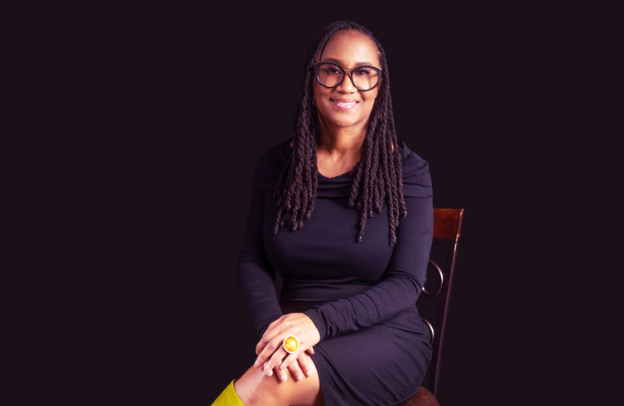Other People’s Stories: How to Boost Your Business Narratives Using Other People’s Stories

In the world of business, storytelling has become an essential tool for connecting with audiences, building trust, and driving growth. But what if the most powerful stories aren’t your own? Leveraging other people’s stories—whether from customers, employees, or industry influencers can elevate your brand’s narrative and create deeper, more meaningful connections.
Want to learn more about storytelling? Start by downloading the first chapter of The Storytelling Mastery.
By weaving external voices into your business storytelling strategy, you can offer fresh perspectives, amplify authenticity, and engage audiences in ways that make your brand not just heard but felt.
In this article, we will explore how to harness the power of other people’s stories to transform your business narrative and boost your impact.
My Personal experiences
As the host of the Obehi Podcast, I have had the privilege of hearing countless personal stories that have shaped my understanding of how powerful storytelling can be for a brand.
From the very beginning, I realized that other people’s stories possess an incredible ability to humanize my business, forge deep emotional connections with my audience, and inspire action.
Through this journey, I have come to understand how crucial it is to feature diverse voices, build genuine relationships, and craft narratives that resonate on a personal level. Below are the key lessons I have learned about leveraging other people’s stories and how this approach has become a cornerstone of my business success.
Discovering Relevance:
One of the first things I discovered as a podcaster is the importance of aligning each guest’s story with the values of my brand. Over the years, I’ve learned that the most impactful stories are those that resonate with my audience on a deeper level—stories that reflect their values, challenges, and aspirations.
See also The Power of Vulnerability: How Sharing Personal Stories Strengthens Your Brand
By carefully selecting narratives that complement my brand’s mission, I’m able to create a stronger emotional connection and build loyalty among listeners who see themselves in these stories.
Building Authentic Relationships:
For me, hosting the Obehi Podcast has always been about more than just content—it’s about building authentic relationships. I’ve spent time getting to know the individuals behind the stories I share and understanding their motivations, struggles, and triumphs.
This process of connection has not only enriched the podcast itself but has also strengthened the trust between me and my guests, ensuring that the stories shared are genuine and true to their experience. It’s this authenticity that resonates so deeply with my audience.
Embracing Diverse Perspectives:
A key takeaway from my podcasting experience has been the power of diversity in storytelling. By intentionally featuring individuals from different walks of life—different cultures, genders, backgrounds, and age groups—I’ve created a more inclusive and compelling narrative.
These diverse perspectives not only enrich my content but also broaden the appeal of my podcast, allowing me to reach a wider audience. It’s a constant reminder of how inclusivity fuels engagement and makes the stories we share more relatable and impactful.
Crafting Compelling Narratives:
As a storyteller, I’ve honed the skill of transforming raw experiences into captivating narratives. Working closely with my guests, I focus on weaving their stories into cohesive and emotionally engaging arcs.
See also Crafting Compelling Narratives: The Art of Storytelling in Tourism Marketing
Whether it’s crafting a storyline that pulls listeners in from the very first sentence or creating emotional moments that leave a lasting impact, I’ve learned that the best stories are those that connect with people on an emotional level.
Leveraging Multiple Channels:
To extend the reach of these powerful stories, I’ve embraced a multi-channel approach. The stories I feature on the Obehi Podcast aren’t confined to the podcast itself—they live on my website, social media platforms, email campaigns, and even video testimonials.
By leveraging a variety of channels, I’m able to amplify the impact of each narrative, creating more opportunities for engagement and deeper connection with my audience.
Through careful curation of stories, fostering genuine relationships, embracing diversity, and leveraging multiple platforms, I’ve unlocked the full potential of other people’s stories in my business. It’s a journey that’s both humbling and inspiring and one that continues to fuel the growth of the Obehi Podcast.
In case you are wondering, here are three popular businesses that have effectively used other people’s stories in their marketing and branding strategies:
1. Nike
How They Use Other People’s Stories: Nike is a master of leveraging personal stories of athletes and everyday people overcoming challenges. Their “Just Do It” campaigns often feature real athletes, both famous and amateur, sharing their journeys of perseverance and triumph.
One of their most iconic campaigns, “Dream Crazier,” highlighted women breaking barriers in sports, using the stories of athletes like Serena Williams and Simone Biles to inspire a global audience.
Impact: By focusing on personal stories of resilience and achievement, Nike has built a brand that resonates emotionally with its audience, thereby creating a strong connection with people from all walks of life.
For more about emotional connection and other tips, we recommend you check out “The Storytelling Mastery”, a five-part book series that takes you by hand through the ABC of storytelling.
2. Coca-Cola
How They Use Other People’s Stories: Coca-Cola is known for using personal stories in its marketing campaigns to evoke positive emotions. The “Share a Coke” campaign, for example, replaced the brand’s logo with popular names on bottles, encouraging people to share a Coke with someone they care about.
This approach puts the spotlight on the relationships and stories between people, rather than just focusing on the product itself.
See also Branding: The Promise We Have Made To Live By And To Leave Behind
Impact: Coca-Cola’s ability to turn personal connections into stories that people could relate to helped humanize the brand and made the experience of drinking a Coke more meaningful.
Can you do the same? Of course, you can, and we will show you how during tomorrow’s audio live event “Using Other People’s Stories”
3. Airbnb
How They Use Other People’s Stories: Airbnb has built its brand around the stories of hosts and guests from around the world. Their “Belong Anywhere” campaign showcased real-life experiences of travelers and hosts, focusing on the personal connections, cultural exchanges, and unique experiences that happen when people open their homes or travel to new places.
By sharing these stories, Airbnb fosters a sense of community and belonging, both for hosts and travelers.
See also The Future of Tourism Marketing: Trends and Innovations in Storytelling Strategy
Impact: By highlighting the human element of travel and accommodation, Airbnb created a brand that emphasizes trust, connection, and authenticity, which are key to its success in the competitive travel industry.
Now this is the point. These brands show how incorporating other people’s stories into marketing can build trust, deepen emotional connections, and create a lasting impact on consumers. So, make sure you join us tomorrow Monday, November 11th at 3 PM Central European Time.
Here is the link to reserve your spot Using Other People’s Stories – Business Storytelling Series
Want to learn more about storytelling? Start by downloading the first chapter of The Storytelling Mastery.






